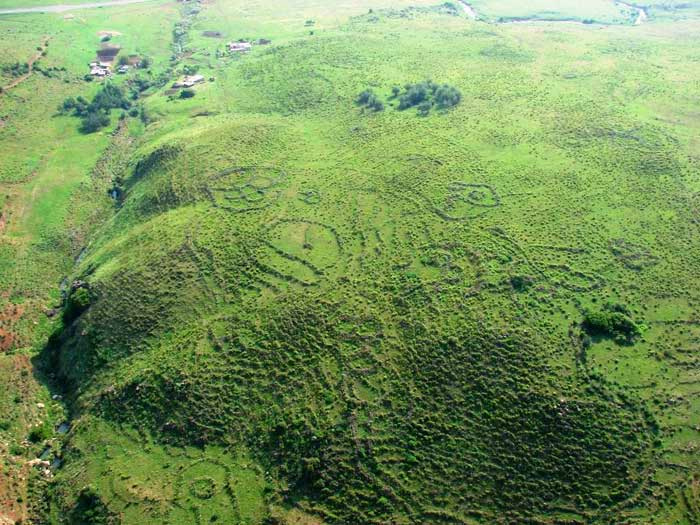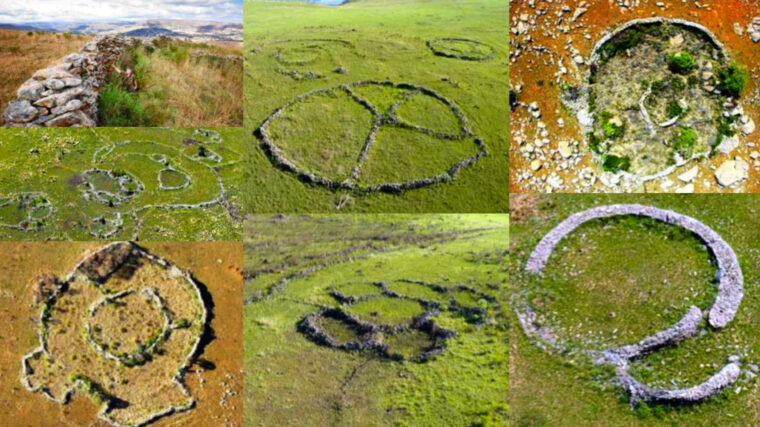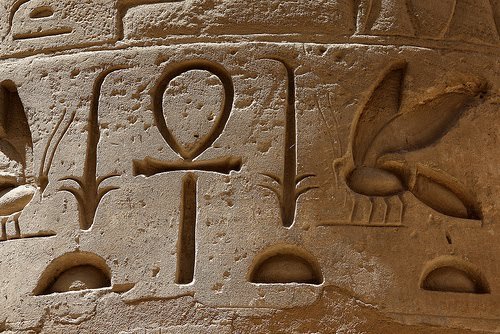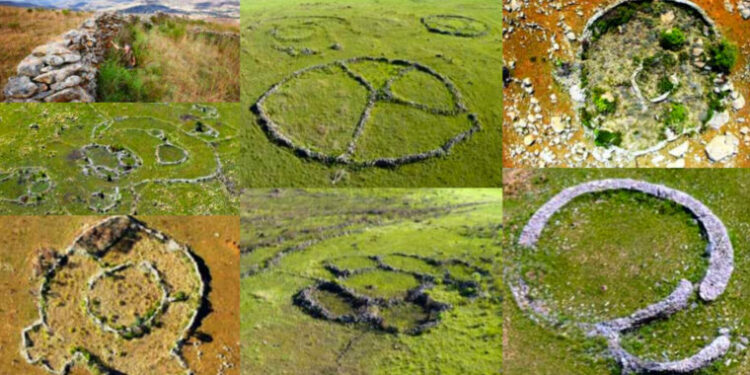Archaeologists uncovered the intricate ruins of a massive stone metropolis in Southern Africa, around 150 kilometers west of Maputo, Mozambique, presumed to have been created by an advanced ancient culture. The researchers measured the dolerite’s erosion rate to calculate the location’s age.
Many believe this historical find may rewrite history since research indicates that the 1500 square kilometer city was erected between 160,000 and 200,000 years ago!

There are remnants of massive stone circles buried in the sand at the ancient site, which are not visible to the naked eye. These unusual circles have been seen in aerial and satellite images.
Whereas Egyptian pyramids and Mesoamerican monuments are the world’s oldest advanced structures, many researchers have perplexed these ancient but intricate remains. Even the oldest forms on the planet, the Megalithic Temples of Malta, were not erected before 3600BC.
Michael Tellinger and Johan Heine uncovered the intriguing remnants of a 200,000-year-old edifice in Mozambique’s Maputo, which is part of an ancient metropolis stretching 10,000 kilometers. It features roadways connecting intricate circular constructions with agricultural fields, showing that it was built by a highly evolved culture. Tellinger has written extensively about his discoveries in his book Temples of the African Gods.
The site’s circular walls cover 1500 square kilometers, even though each wall is just 3-5 meters high in spots. However, the walls were much taller and would have been damaged by weather erosion. To add to the intrigue, the location is geologically located near multiple gold mines, and it has been hypothesized that they were the first gold miners.
Strange Discoveries at an Ancient Southern African Site:

It’s incredible to think that a sign of an Egyptian god may have existed thousands of years before the Egyptian civilization was discovered.
Historians think Egyptians were the first to worship the gods etched on the walls of Egyptian temples. However, it is more likely that the Egyptians got their beliefs from this Southern African society.
“The images, artifacts, and evidence we gathered indicate a vanished civilization that has never previously existed and predates all others—not by a few hundred years or a few thousand years,” Tellinger said.
Criticism Of The 200,000-Year-Old City Discovered In Southern Africa:

According to them, 200,000-year-old human bones, artifacts, and villages may have existed, but no ruins around the globe can be traced back that long.
They also refer to the discoverers, Michael Tellinger and Johan Heine, as “independent researchers” and firefighters, respectively, who did not scientifically date the site using any approved method and instead oriented it to the sky.
Given the material’s hardness, there are concerns about the accuracy of the dolerite erosion technique of dating. They claim that it is not a viable method of dating human construction, and neither is equipped to do so.
As a result, Tellinger has gotten no affirmative support or assistance from conventional researchers for this miraculous finding. On the other hand, the ancient astronaut theorists feel it is the collective hubris of theorists who want their beliefs about previous civilizations to stay legitimate.
Despite the Sumerian tablets of the kings’ list, which contain a list of monarchs stretching 224,000 years, ten are kings verified to have existed before the biblical deluge. “Archeologists don’t want to deal with or recognize these historical periods,” Tellinger explained.






















